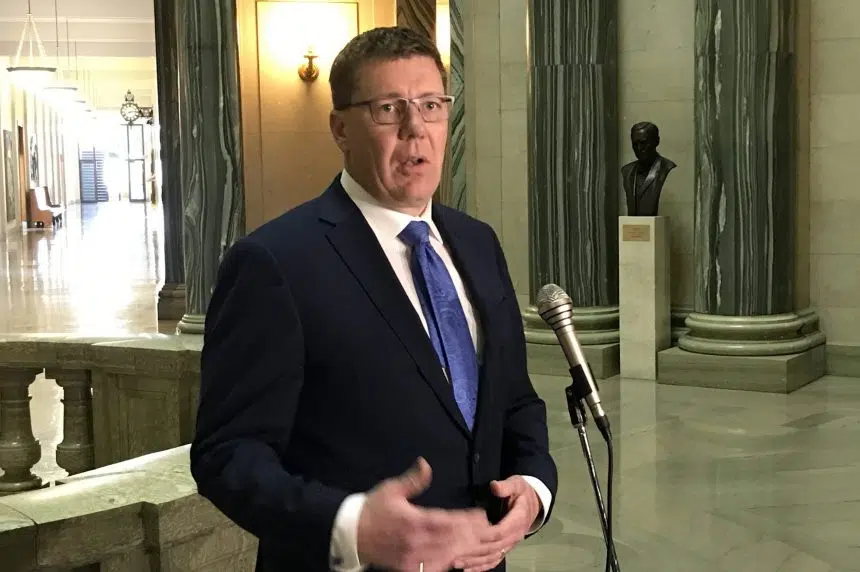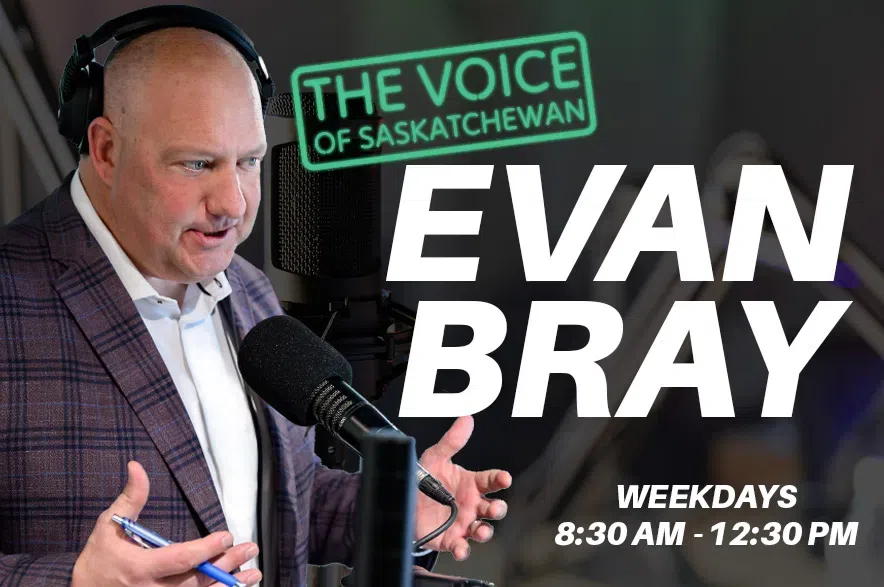If all goes according to plan, Saskatchewan could start to reopen for business on May 4.
Premier Scott Moe and the province’s chief medical health officer, Dr. Saqib Shahab, unveiled the Re-Open Saskatchewan plan Thursday morning.
As Moe has said often, the province wants to gradually and methodically lift restrictions that have been put in place due to the COVID-19 pandemic. To that end, the plan features five phases, with the first one set to begin May 4.
Restrictions will be lifted on certain businesses and services, allowing them to reopen. However, they’ll be required to maintain physical distancing and cleaning and disinfection practices to continue the province’s battle against COVID-19.
As of Thursday, there have been 331 cases of coronavirus in Saskatchewan to date. A total of 270 people have recovered.
The relatively low numbers of late led the province to decide to restart its economy piece by piece.
“We have to find the middle ground that continues to keep our case numbers low and keep Saskatchewan people safe while at the same time allowing for businesses to reopen and Saskatchewan people to get back to work …,” Moe said during a conference call.
“By proceeding with caution, by maintaining restrictions in those most high-risk areas and activities and by continuing with good physical distancing and cleanliness practices, I believe Saskatchewan can find the right path. I believe we can carefully and cautiously begin to reopen our province while still protecting Saskatchewan residents from the spread of COVID-19.”
The government noted the timing and order of businesses and workplaces included in each phase is subject to change based on continued monitoring of the virus and its transmission.
As restrictions are lifted, the government and Shahab will monitor the daily number of reported cases and other indicators. Those will determine the future course of action as other phases are considered.
The fact that some businesses have been open over the past six weeks and the numbers haven’t spiked has created a sense of confidence that other services can be offered in the coming weeks.
“If transmission was to happen, we would investigate in detail, understand what was there that could have been improved and provide that feedback to the providers and to the public,” Shahab told reporters.
“We will see ongoing transmission; we hope that will remain as low as possible. We want to see the curve remain flat during the reopening phase and we want to learn from that and provide continuous feedback.”
The release noted that the Re-Open Saskatchewan strategy does not address the plans of the Saskatchewan Health Authority.
“Resumption of elective surgeries, diagnostics and other non-essential procedures currently suspended as part of the COVID-19 system response will be considered separately, with updates on that plan coming in the near future,” the release said.
Phase One (May 4)
Medical services such as dentistry, optometry, physical therapy, optician services, podiatry, occupational therapy and chiropractic treatment would reopen to the public.
As well, low-risk outdoor recreational activities would be allowed, provided precautions are taken. Those activities would include fishing and boat launches (May 4), golfing with physical distancing guidelines (May 15) and the operation of parks and campgrounds (June 1).
Online reservations for parks would be accepted starting May 4.
Public and private gatherings would remain limited to a maximum of 10 people.
Phase Two (May 19)
Retail businesses and certain personal services that previously were closed under the public health order would be permitted to reopen.
The businesses would include clothing stores, shoe stores, flower shops, sporting goods/adventure stores, vaping supply shops, boat, ATV and snowmobile dealers, gift, book and stationery stores, jewelry and accessory stores, toy stores, music, electronic and entertainment stores, pawn shops and travel agencies.
Personal service businesses that would be permitted to reopen would include hairdressers/barbers, registered massage therapists, acupuncturists and acupressurists.
Physical distancing would be required, but if it’s not possible, providers would have to take steps such as wearing gloves and facemasks and doing customer screening.
For clothing stores, trying on clothing would be prohibited.
The government suggested that some retail outlets would have to encourage online shopping, with front counter or curb pickup, and adopt a no-return policy.
Again, public and private gatherings would be limited to a maximum of 10 people.
Phase Three (Date To Be Determined)
Restaurants and bars would reopen in this phase, but only to a maximum of 50 per cent capacity.
Child-care facilities, gyms and fitness facilities also would reopen.
All facilities that provide child-care services would be limited to a maximum of 15 children per building space.
Physical distancing and stringent cleaning protocols would have to be in place in gyms and fitness facilities.
More personal services would be allowed to resume operations, including estheticians, tattoo artists, cosmetologists, electrologists, manicurists/pedicurists, sun tanning parlours, and facilities where body piercing, bone grafting or scarification services are done.
Other than in businesses, the allowable size of public and private gatherings would increase to a maximum of 15 people.
Phase Four (Date To Be Determined)
Indoor and outdoor recreation and entertainment facilities – such as casinos, bingo halls, arenas, curling rinks, swimming pools, galleries, theatres, museums, parks and playgrounds – would reopen.
Seasonal programs such as camps and athletic activities also could start.
The maximum number of people able to attend public and private gatherings would rise to 30.
Phase Five (Date To Be Determined)
The final phase would involve the potential lifting of long-term restrictions.
In the meantime, restrictions on high-risk areas are to remain in effect for the foreseeable future.
Those include:
- Maintaining the current Provincial State of Emergency;
- Recommendations against non-essential international and interprovincial travel;
- Mandatory 14-day self-isolation following international travel, exposure to COVID-19, or a positive COVID-19 test;
- Visitor restrictions limited to compassionate reasons at long-term care homes, hospitals, personal care homes, and group homes; and,
- The suspension of classes in all primary and secondary educational institutions, both public and private.
As well, large public gatherings would still be prohibited.
The government noted that, through all five phases, hand-washing and physical distancing must remain prevalent, people should continue working from home if possible, seniors and those with underlying health conditions should minimize high-risk exposure, and enhanced cleaning and disinfection should take place in workplaces, public spaces and recreational facilities.
As well, the government reiterated that employees at long-term care and personal care homes must work at only one facility starting April 28.
More details of the plan can be found below:











